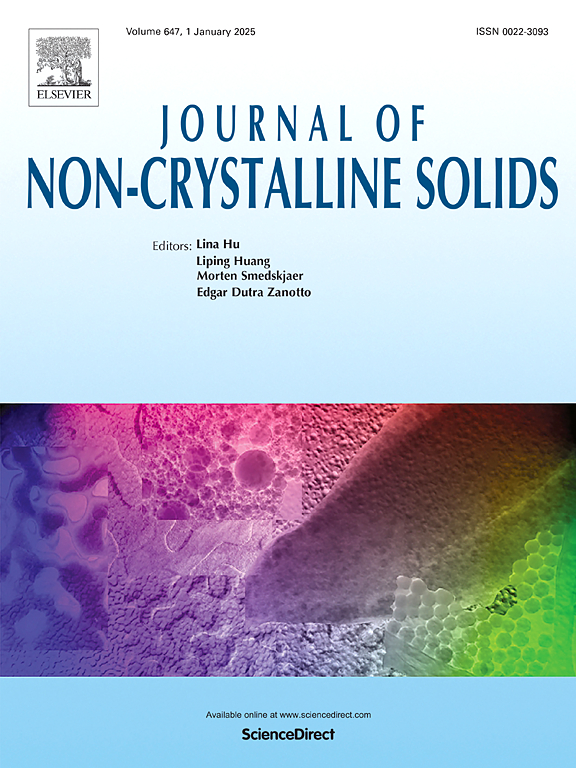Prediction of glass refractive index based on a multi-algorithm stacked integration model
IF 3.5
3区 材料科学
Q1 MATERIALS SCIENCE, CERAMICS
引用次数: 0
Abstract
Machine learning (ML) has been recognized as a viable method to accelerate the design of materials with targeted properties. A number of composition–property relationships for modeling oxide glasses with machine learning have been recently reported, including density, modulus of elasticity, glass transition temperature, and refractive index. As we know, most current models for predicting the refractive index of glass compositions usually use a single machine learning algorithm. But a single machine learning model may not fully capture all complex relationships in the data, resulting in model bias. Herein, we use a multi-algorithm stacked integration approach—namely stacking different algorithms—to rectify model bias caused by a single algorithm. We provide insight into a new strategy of applying stacked integration models in oxide glass prediction. SPearman’s coefficients are used to discover relationships between features and target variables, combined with SHAP additive interpretation and analysis. In this paper, a stacked integration model is proposed to predict the refractive index of oxides, and RMSE is reduced by 3.6%–38% compared to a single model. The potential of stacked integration models to predict refractive index is proven through our work.
基于多算法叠加积分模型的玻璃折射率预测
机器学习(ML)已被认为是加速具有目标性能的材料设计的可行方法。最近报道了许多用机器学习建模氧化玻璃的成分-性质关系,包括密度、弹性模量、玻璃转变温度和折射率。正如我们所知,目前大多数预测玻璃成分折射率的模型通常使用单一的机器学习算法。但是,单个机器学习模型可能无法完全捕获数据中的所有复杂关系,从而导致模型偏差。在此,我们使用多算法堆叠积分方法-即堆叠不同的算法-来纠正由单一算法引起的模型偏差。我们提出了一种应用堆叠集成模型预测氧化玻璃的新策略。SPearman系数用于发现特征和目标变量之间的关系,并结合SHAP加性解释和分析。本文提出了一种叠置积分模型来预测氧化物的折射率,与单一模型相比,RMSE降低了3.6% ~ 38%。通过我们的工作,证明了堆叠积分模型预测折射率的潜力。
本文章由计算机程序翻译,如有差异,请以英文原文为准。
求助全文
约1分钟内获得全文
求助全文
来源期刊

Journal of Non-crystalline Solids
工程技术-材料科学:硅酸盐
CiteScore
6.50
自引率
11.40%
发文量
576
审稿时长
35 days
期刊介绍:
The Journal of Non-Crystalline Solids publishes review articles, research papers, and Letters to the Editor on amorphous and glassy materials, including inorganic, organic, polymeric, hybrid and metallic systems. Papers on partially glassy materials, such as glass-ceramics and glass-matrix composites, and papers involving the liquid state are also included in so far as the properties of the liquid are relevant for the formation of the solid.
In all cases the papers must demonstrate both novelty and importance to the field, by way of significant advances in understanding or application of non-crystalline solids; in the case of Letters, a compelling case must also be made for expedited handling.
 求助内容:
求助内容: 应助结果提醒方式:
应助结果提醒方式:


